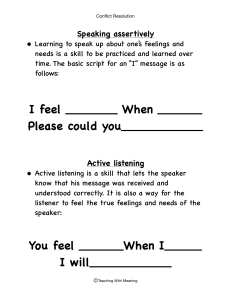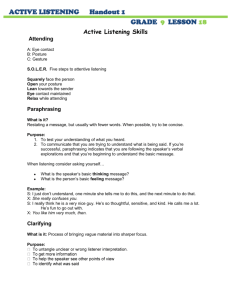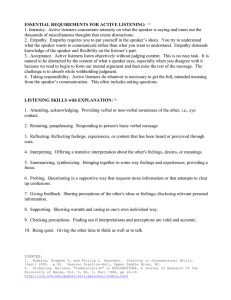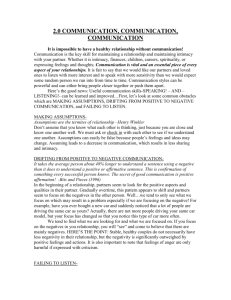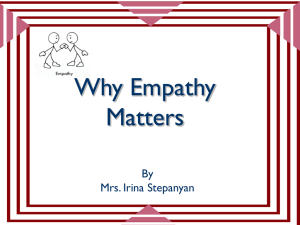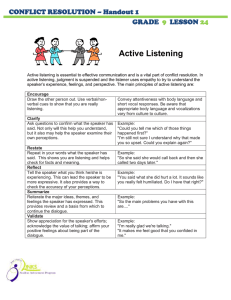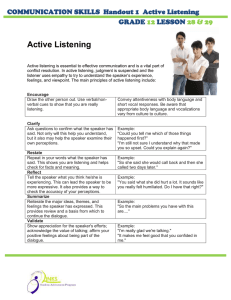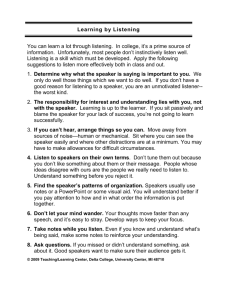Attending S.O.L.E.R. Paraphrasing
advertisement
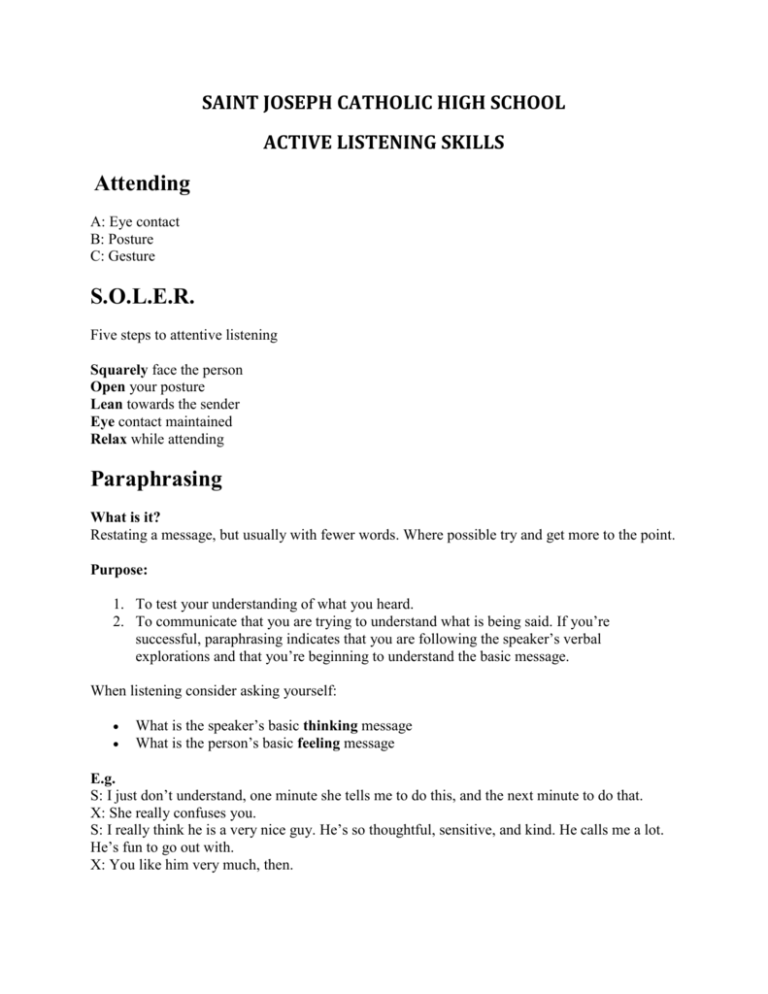
SAINT JOSEPH CATHOLIC HIGH SCHOOL ACTIVE LISTENING SKILLS Attending A: Eye contact B: Posture C: Gesture S.O.L.E.R. Five steps to attentive listening Squarely face the person Open your posture Lean towards the sender Eye contact maintained Relax while attending Paraphrasing What is it? Restating a message, but usually with fewer words. Where possible try and get more to the point. Purpose: 1. To test your understanding of what you heard. 2. To communicate that you are trying to understand what is being said. If you’re successful, paraphrasing indicates that you are following the speaker’s verbal explorations and that you’re beginning to understand the basic message. When listening consider asking yourself: What is the speaker’s basic thinking message What is the person’s basic feeling message E.g. S: I just don’t understand, one minute she tells me to do this, and the next minute to do that. X: She really confuses you. S: I really think he is a very nice guy. He’s so thoughtful, sensitive, and kind. He calls me a lot. He’s fun to go out with. X: You like him very much, then. Clarifying What is it: Process of bringing vague material into sharper focus. Purpose: To untangle unclear or wrong listener interpretation. To get more information To help the speaker see other points of view To identify what was said e.g. I’m confused, let me try to sate what I think you were trying to say. You’ve said so much, let me see if I’ve got it all. Perception Checking What is it: Request for verification of your perceptions. Purpose: 1. To give and receive feedback 2. To check out your assumptions e.g. Let me see if I’ve got it straight. You said that you love your children and that they are very important to you. At the same time you can’t stand being with them. Is that what you are saying? Summarizing What is it: pulling together, organizing, and integrating the major aspects of your dialogue. Pay attention to various themes and emotional overtones. Pout key ideas and feelings into broad statements. DO NOT add new ideas. Purpose: To give a sense of movement and accomplishment in the exchange To establish a basis for further discussion. Pull together major ideas, facts, and feelings e.g. A number of good points have been made about rules for the classroom. Let’s take a few minutes to go over them and write them on the board. We’re going all over the map this morning. If I understand you correctly, The three major points of the story are… Primary Empathy What is it: Reflection of content and feelings Purpose: 1. To show that you’re understanding the speaker’s experience 2. To allow the speaker to evaluate his/her feelings after hearing them expressed by someone else Basic Formula: You feel (state feeling) because (state content) e.g. Student: I just don’t know how I am going to get all this math homework done before tonight’s game especially since I don’t get most of this stuff you taught us today. Teacher: You are feeling frustrated and stuck…You are feeling frustrated and stuck with math you don’t know how to do and you’re worried that you won’t figure it out before you go to the game. The main fear for you seems to be fear -- you’re really scared of losing your relationship if things don’t get better. It’s upsetting when someone doesn’t let you tell your side of the story. Advanced Empathy What is it: reflection of content and feeling at a deeper level. Purpose: To try and get an understanding of what may be deeper feelings e.g. I get the sense that you are really angry about what was said, but I am wondering if you also feel a little hurt by it. You said that you feel more confident about contacting employers, but I wonder if you also still feel a bit scared.
